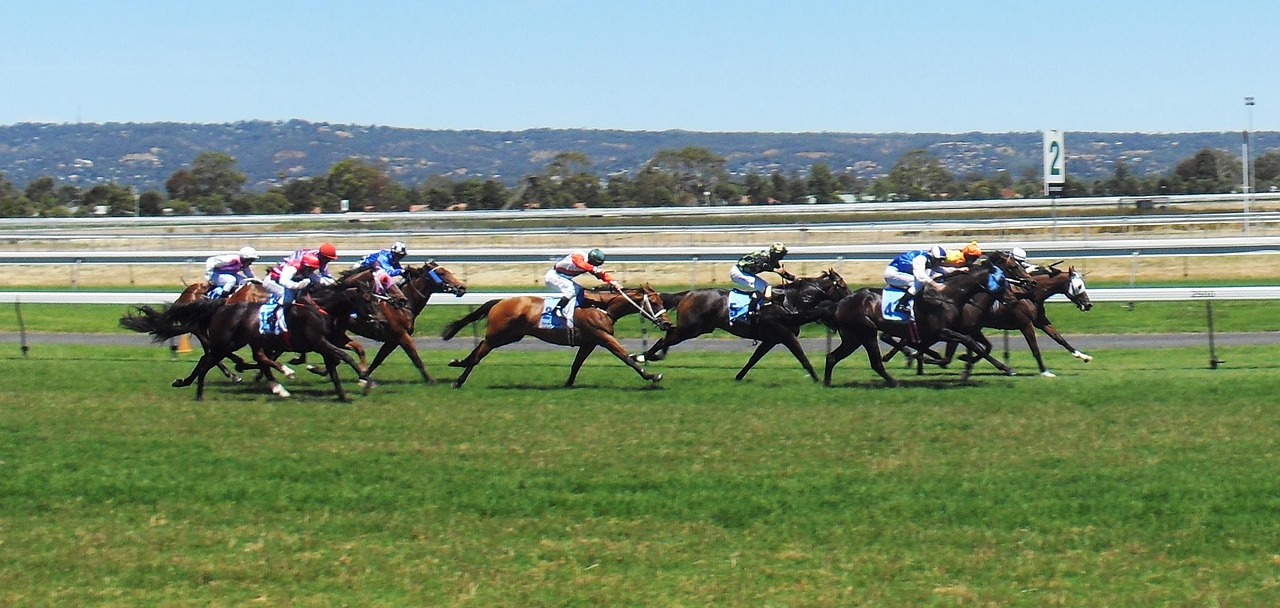Understanding running styles is one of the most important factors when analyzing a horse race. Every horse has a natural way of running. Some will lead early, some stalk mid pack, and some wait patiently to make strong late moves. Additionally, jockey and trainer tactics can also influence a horse’s running style. Learning these styles can help you understand the flow of a race and predict how it is going to unfold.
What are Running Styles in Horse Racing?
Running styles show how a horse usually positions itself during a race. Some horses like to take the lead right away, while others hold back to conserve energy for a big late move. It’s important to keep in mind that this is the tendency of the horse, but it can vary from race to race. A horse’s running style comes from a combination of factors, including jockey and trainer strategies, the horse’s natural speed, and what is most comfortable for the horse.
Four Main Running Styles

Before looking at a race, it helps to see what running style each horse usually has. This will give you a good sense of how the race might play out. Below are the four main running styles that you’ll find in horse racing:
- Early (E)– These horses break quickly from the gate and try to position themselves in front right away. These horses tend to have strong early pace figures and want to control the race from the start.
- Early/Presser (E/P)– Horses with this run style are more versatile because they can take the lead or sit behind. They tend to be in the top spots early on. This running style is very consistent because these horses can adapt to different race scenarios well.
- Presser/Stalker (P)– These horses sit just behind the leaders, “stalking” them while conserving energy. They wait for the frontrunners to tire out, then they’ll make their move to take the lead. You’ll find these horses in the middle of the pack early on, but they will move forward as the leaders tire and slow down.
- Closer/Sustainer (S)– This run style stays towards the back early on and makes a strong late run. These horses do best when the frontrunners set a fast pace and tire out.
How Running Styles Affect a Horse Race
Running styles come from looking at a horse’s pace and the patterns that they have shown in previous races. This is useful in helping you understand how the race may unfold. For example, if there are multiple horses with an early running style, the race will likely be fast-paced right away. This can benefit the closers and presser horses that wait for others to tire out before making their move. If there is only one early horse, they may control the pace of the race.
Race Distance and Running Style
The distance of a race can affect how horses of different running styles perform. Early and early/presser horses usually do well in shorter races where early speed is needed. Closers/sustainers tend to do well in longer races where they have plenty of time to make a strong late move. Presser/stalker horses are more flexible and can adapt to both short and long distance races because how they perform will depend on the pace set by the leaders. Several key insights can be gathered from the distance of a race and the run styles of the horses in it.
Surface and Running Style

Some running styles tend to perform better on certain track surfaces than others. Early and early presser horses tend to have the edge on dirt tracks because they favor early speed and the front-running position. Dirt tracks can create a lot of kickback that may slow down horses that sit behind the leaders. Kickback can be worse during muddy conditions, giving stalking horses more difficulty.
Turf surfaces tend to allow pressers and closers to do better because the races usually unfold at a slower pace with less kickback. This allows pressers and closers to conserve their energy and make strong late moves. Turf also provides more traction for horses, allowing for better acceleration.
How to Find Running Style in InClover Handicapping

Finding a horse’s run style with the InClover Handicapping tool is simple. First, log in or create a free account. Then, upload the Brisnet DRF file for the track and race day that you want to analyze. Once the file is successfully uploaded, our tool will generate detailed information for all the races on that day at the track. Simply select the race you want to analyze, then open the in-depth report or the pars report. This will show each horse’s running style, along with other useful details to help you understand the pace and flow of the race.


